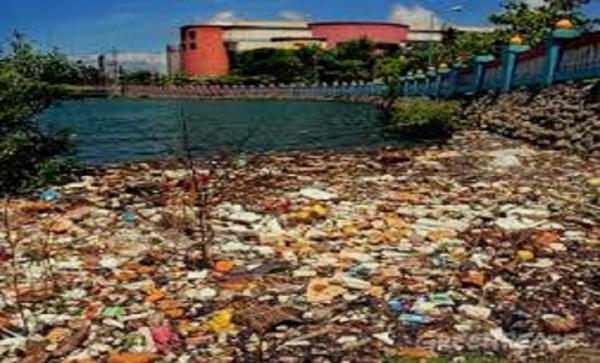Environmental issues in India

There are many environmental issues in India. Air pollution, water pollution, garbage, and pollution of the natural environment are all challenges for India. The situation was worse between 1947 through 1995. According to data collection and environment assessment studies of World Bank experts, between 1995 through 2010, India has made one of the fastest progress in the world, in addressing its environmental issues and improving its environmental quality. Still, India has a long way to go to reach environmental quality similar to those enjoyed in developed economies. Pollution remains a major challenge and opportunity for India.
Environmental issues are one of the primary causes of disease, health issues and long term livelihood impact for India.
British rule of India saw several laws related to environment. Amongst the earliest ones were Shore Nuisance (Bombay and Kolaba) Act of 1853 and the Oriental Gas Company Act of 1857. The Indian Penal Code of 1860 imposed a fine on anyone who voluntarily fouls the water of any public spring or reservoir. In addition, the Code penalized negligent acts. British India also enacted laws aimed at controlling air pollution. Prominent amongst these were the Bengal Smoke Nuisance Act of 1905 and the Bombay Smoke Nuisance Act of 1912. Whilst these laws failed in having the intended effect, British-enacted legislations pioneered the growth of environmental regulations in India.
Upon independence from Britain, India adopted a constitution and numerous British-enacted laws, without any specific constitutional provision on protecting the environment. India amended its constitution in 1976. Article 48(A) of Part IV of the amended constitution, read: The State shall endeavor to protect and improve the environment and to safeguard the forests and wildlife of the country. Article 51 A(g) imposed additional environmental mandates on the Indian state.
Other Indian laws from recent history include the Water (Prevention and Control of Pollution) Act of 1974, the Forest (Conservation) Act of 1980, and the Air (Prevention and Control of Pollution) Act of 1981. The Air Act was inspired by the decisions made at Stockholm Conference. The Bhopal gas tragedy triggered the Government of India to enact the Environment (Protection) Act of 1986. India has also enacted a set of Noise Pollution (Regulation & Control) Rules in 2000.
In 1985, Indian government created the Ministry of Environment and Forests. This ministry is the central administrative organization in India for regulating and ensuring environmental protection.
Despite active passage of laws by the central government of India, the reality of environmental quality mostly worsened between 1947 to 1990. Most of Indian economy was nationalised and owned by India, and regulations were mostly ignored by state run enterprises. Rural poor had no choice, but to sustain life in whatever way possible. The state governments of India often regarded environmental laws enacted by the central government as a mere paperwork formality. Air emissions increased, water pollution worsened, forest cover decreased.
Starting in the 1990s, reforms were introduced. Since then, for the first time in Indian history, major air pollutant concentrations have dropped in every 5-year period. Between 1992 to 2010, satellite data confirms India's forest coverage has increased for the first time by over 4 million hectares, a 7% increase.
In my point of view all the students are also aware Environmental issues in India for Best BBA College in Indore.
The author of this articleis Assistant Professor Pioneer Institute of Professional Studies, Indore





